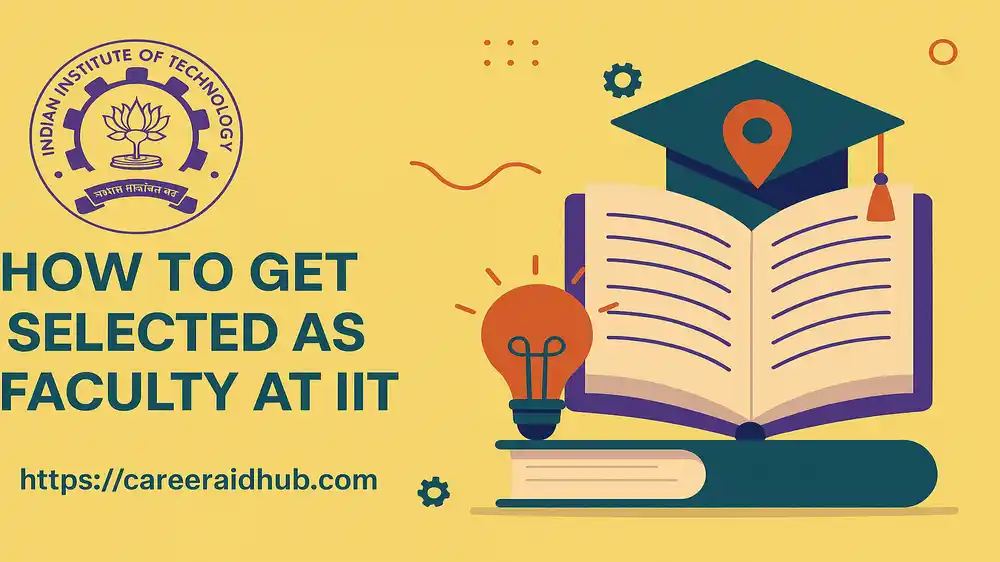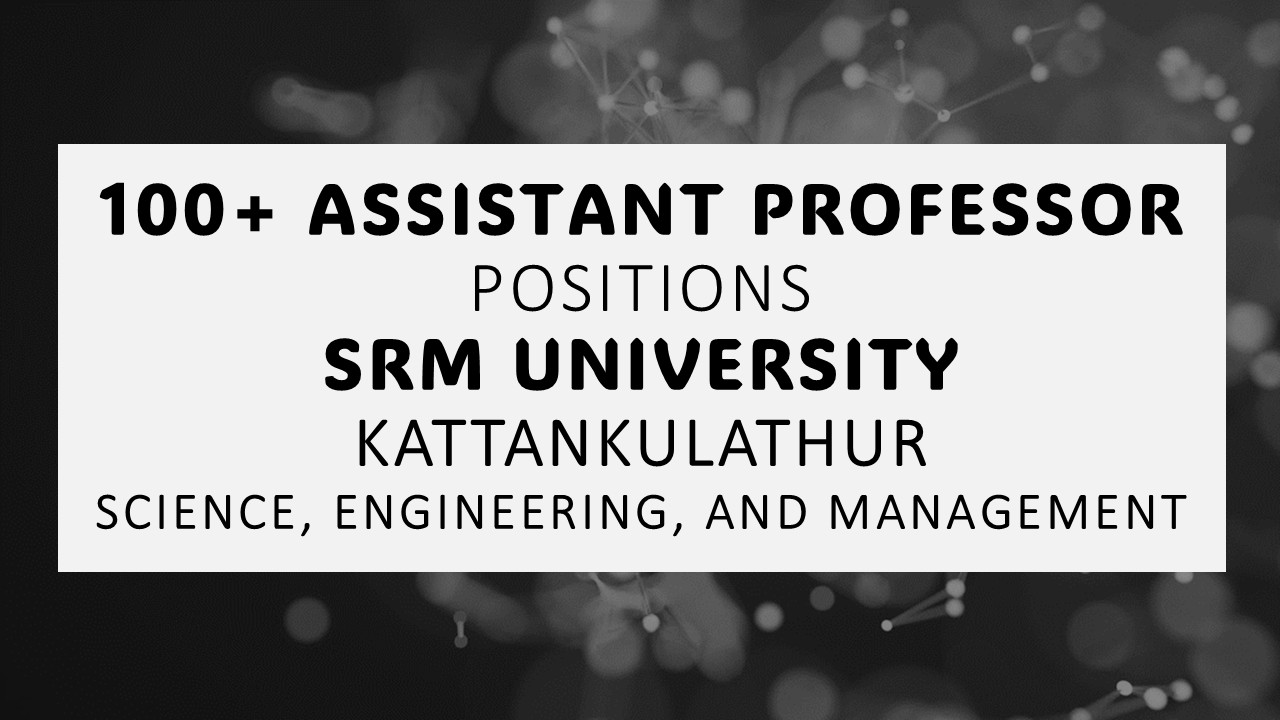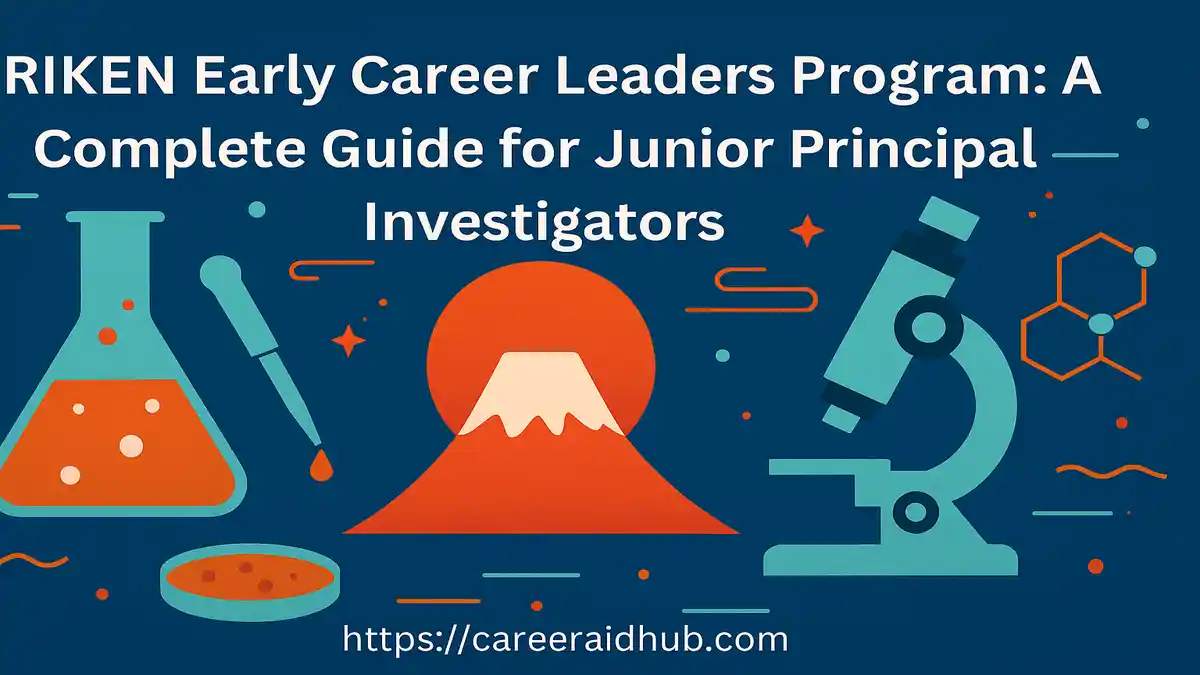Becoming a faculty member at an Indian Institute of Technology (IIT) is among the most competitive and meaningful academic milestones in India. IITs are recognized as Institutes of National Importance and are governed by the Institutes of Technology Act, 1961, underscoring their academic, research, and nation-building mandate. Thousands of scholars aspire to join the IIT ecosystem every year; only a fraction succeed because expectations are high, standards are uncompromising, and selection committees look for evidence of enduring excellence.
This comprehensive guide turns that aspiration into a structured plan. It walks through the full pathway from crafting the ideal scholarly profile and preparing airtight application materials to presenting research, aligning with departmental goals, and demonstrating teaching strength. Each section is written for serious applicants who want a step-by-step, professional blueprint.
1. The Ideal Academic Profile of an IIT Faculty Candidate
A competitive IIT faculty profile blends scholarly depth, independent research capability, and a clear trajectory for future impact. At a minimum, candidates should demonstrate the following elements:
-
Educational Qualifications: Minimum:
Ph.D. in a relevant discipline. Preferred: Postdoctoral experience (ideally 2–5 years) with a clear record of independent research leadership.
-
Reputed Institutions for Ph.D. and Postdoc: India: IISc Bangalore, older IITs, IISERs, TIFR, NCBS, major CSIR laboratories. Abroad: QS Top 200 universities and elite research institutes (e.g., Max Planck Institutes, MIT, Stanford, Cambridge, Oxford, ETH Zurich).
-
Publications: Consistent output in Q1 Scopus/Web of Science journals relevant to your field. Show growing citation metrics and an h-index appropriate to your career stage. (Quality outweighs sheer quantity, but both matter.)
-
Research Grants & Patents: Evidence of funding or innovation potential, such as early-career fellowships (e.g., SERB, DBT, or DST INSPIRE Faculty Award) and any filed or granted patents with clear potential for technology transfer.
-
Recognition: Awards or honors (best paper awards, young scientist awards), invited talks at high-visibility venues, and scholarly service (e.g. journal reviewer or conference session chair roles).
2. Preparing a Strong Application
Applications that stand out are precise, relevant, and meticulously tailored to the department’s needs. Use the following structure for your application materials:
data-end="4662">
Tailoring Your CV: Keep it academia-focused with clear sections: Education; Research Experience; Publications; Teaching Experience; Grants & Projects; Patents; Awards. Quantify impact wherever possible (e.g., total citations, h-index, funding amounts, patents filed or commercialized). Show a trajectory of achievements rather than just a list of duties.
Cover Letter: Address it to the Director or Head of Department by name. In 1–2 pages, explain how your expertise directly fits the department’s needs and ongoing initiatives. Mention specific department research areas or projects that align with your work. Convey enthusiasm for contributing to the institute’s mission.
Research Statement: Articulate your overarching research theme, past achievements, and a realistic five-year plan. Highlight the big-picture problem you tackle and why it matters now. Emphasize interdisciplinary angles, societal relevance, and alignment with national priorities (for example, how your work could advance Make in India or Digital India goals). Keep it focused but ambitious.
Teaching Statement: List core courses you can teach immediately (including foundational undergraduate courses) and elective or specialized courses you could introduce. Provide evidence of teaching excellence or innovative pedagogy (such as excellent feedback as a TA or usage of new
teaching methods). Mention any curriculum design experience and your teaching philosophy in handling both large introductory classes and advanced seminars.
Departmental Alignment: Do your homework on the department. Study current faculty profiles and ongoing projects to identify how you complement them. In your materials, explicitly name specific faculty or labs whose work intersects with yours and propose how you could collaborate. Demonstrating this level of knowledge shows you’re serious and see yourself as part of their community.
3. Presenting Your Research Effectively
If you are shortlisted, you will likely have to present your research (either during the interview or as a submitted seminar). Here’s how to make it count:
-
Make It Stand Out: Open your presentation or write-up by framing the big-picture problem and why it matters now. Clearly state the unique contributions of your research and how they advance the field. Avoid diving into minutiae before establishing context.
-
Align With IIT’s Mission: Emphasize how your work strengthens the institute’s research priorities and contributes to national or societal goals. For example,
if the IIT has a focus on sustainability or AI, show how your projects feed into those themes.
-
Demonstrate Societal Impact: Whenever possible, quantify or concretely describe the outcomes of your research. This could include patents, prototypes, software/tools developed, industry uptake, standards contributions, or any technology transfer. IITs value research that doesn’t just publish, but also translates into real-world impact.
-
Use Metrics Wisely: While you should avoid an overreliance on vanity metrics, it’s useful to mention your citations, h-index, grants secured, collaborators, and any translation milestones (like field trials for an engineering project, or policy inputs from a social science project). These back up your narrative of growing influence.
4. Key Qualifications and Extra Efforts Required
Beyond the basics, most successful candidates go the extra mile to set themselves apart:
-
Benchmarks: Aim to have 8–12 high-quality journal papers (preferably in Q1 journals) by the end of your postdoc, depending on the field. Similarly, an h-index in the low teens (10–15) with an upward citation trajectory is competitive for early-career candidates. These are not strict cutoffs but give a sense of a competitive research output.
-
Teaching Experience: IIT faculty are expected to handle both undergraduate and graduate teaching from day one. Proactively gain teaching experience: deliver guest lectures or short courses at reputable institutions, serve as a Teaching Assistant (TA) during your Ph.D. (and take it seriously), and seek feedback to improve. Document any teaching excellence (e.g., teaching awards or outstanding student evaluations).
-
Networking: Build a professional network that includes IIT faculty and researchers in your field. Attend conferences, especially ones hosted by IITs, and actively participate in workshops or alumni meets. Introduce yourself to potential future colleagues and discuss your work. A known face (with good work) is more likely to be remembered during hiring.
-
Student Mentoring: Demonstrate your ability to mentor and lead. Supervise undergraduate or master’s student projects during your Ph.D. or postdoc. If you can, co-author papers with junior students. This shows you can guide students – a critical part of a faculty role – and helps build your leadership profile.
5. A Scientific Approach to Increase Selection Probability
Approach your career progression and application strategy analytically, almost like a research problem in itself. Consider these steps:
-
Gap Analysis: Audit the target department’s expertise. Identify underrepresented or emerging areas where you could add immediate value. For example, if a particular IIT’s computer science department is strong in theory but lacks an expert in, say, cybersecurity or blockchain, that could be an opportunity. Align your focus to fill such gaps.
-
Identify Priority Domains: Align your work with domains that are high priorities nationally and for IITs. Currently, some hot areas include:
-
Artificial Intelligence & Machine Learning (especially applied AI in healthcare, agriculture, smart cities, etc.)
-
Green Hydrogen & Renewable Energy (supporting India’s National Green Hydrogen Mission, solar energy advancements, energy storage technologies)
-
Quantum Technologies (quantum computing, communication, and cryptography – given the new National Quantum Mission)
-
Advanced Manufacturing (Industry 4.0, robotics, 3D printing, semiconductor fabrication, etc.)
-
Climate Science & Sustainability (climate modeling, sustainable materials, environmental remediation, etc.)
These are illustrative; make sure to pinpoint the ones relevant to your discipline. Working in a priority area not only helps your chances (more funding and positions often go there) but also gives your research greater impact.
-
Publish Strategically: Target the journals and conferences that are most respected in your field and most read by the faculty of your target IIT departments. For instance, if you’re in AI, publishing in IEEE TPAMI or NeurIPS will likely get noticed. In energy or materials, Nature/ACS journals or International Journal of Hydrogen Energy are read by many in the field. Strategic publishing means balancing high-impact venues with ensuring your work is visible to the right audience (including industry, if applicable).
-
Multi-Year Roadmap: Don’t wait until the year you apply to scramble for achievements. Plan a 3–5 year roadmap leading to your application: aim to secure a couple of major publications each year, get an early-career grant, start a collaboration with someone at an IIT, and maybe file a patent. This sustained progress will make your application file thick and persuasive by the time you apply.
6. Recommended Career Path Before Applying
Where to Gain Experience: In most cases, a Ph.D. alone (even from IIT or IISc) is not enough to be competitive for IIT faculty. Pursue postdoctoral work at IISc, IITs, IISERs, or internationally top-ranked universities to build an independent, fundable research identity. Working in a top lab exposes you to new techniques and often provides networking channels back to IITs.
Post-Ph.D. Experience: An ideal range is about 3–5 years of postdoctoral or equivalent R&D experience where you can accumulate publications and maybe a grant. More than 5 years post-Ph.D. is not necessarily a problem (many successful hires have longer stints, especially abroad or in industry R&D), but ensure that those years show progression (e.g., increasing responsibility, bigger projects, leadership roles). The key is to demonstrate independent work beyond your Ph.D. For instance, leading a project or being corresponding author on papers during your postdoc signals readiness to be a principal investigator.
Balanced Profile: Aim for a realistic balance of activities in those early-career years: roughly 50% research, 30% teaching (or teaching preparation), and 20% outreach/administrative skills. This might mean: publishing and proposal writing take half your time; teaching, mentoring, or certificates in higher education take a chunk; and the rest goes to things like organizing workshops, reviewing papers, or participating in professional societies. IITs value well-rounded academics who can not only do research but also teach and contribute to institute development.
7. Step-by-Step Plan to Enhance Your Chances of Selection
The journey to an IIT faculty position can be mapped as a series of milestones. Here’s a timeline with key steps and targets:
| Step |
Action |
Target Timeline |
| 1 |
Complete Ph.D. from a reputed institution (IIT/IISc or top global university) – focus on a high-demand research area. |
Years 0–4 of career (Ph.D. duration) |
| 2 |
Publish in high-impact journals during Ph.D. (aim for 3–6 good papers). |
Years 1–4 (during Ph.D.) |
| 3 |
Secure a prestigious postdoctoral fellowship (in India or abroad). |
Years 5–8 |
| 4 |
Build research collaborations with IIT faculty (joint papers or projects). |
Years 5–8 |
| 5 |
Apply for early-career research grants (national fellowships, SERB, etc.). |
Years 6–8 |
| 6 |
Gain teaching and curriculum design experience. |
Years 5–8 |
| 7 |
Prepare a tailored application for a specific IIT opening. |
Years 7–9 (when ready to apply) |
| 8 |
Deliver a strong interview and research presentation. |
At the interview stage (Year 7–9) |
Each step is detailed in the next section, but the above gives a bird’s-eye view. Not everyone will follow the exact same order (for example, some might secure grants earlier or do multiple shorter postdocs), but most of these pieces should be in place by the time you apply.
8. Other Practical Tips
-
Timing Your Application: Keep an eye on when departments are expanding or when special recruitment drives happen. For instance, if a department received funding for a new center or a new program (say a Centre of Excellence in AI or a new MSc program), they might hire in those areas. Watch for faculty advertisements and note any specific call-outs for certain specialties. Don’t hesitate to apply on a rolling basis if the IIT allows it, but your chances improve if there’s an active hiring cycle.
-
Follow-Up: After submitting an application, it’s acceptable to politely check on its status after a reasonable interval (often a few months, as academic hiring can be slow). Keep any follow-up email short and professional – e.g., a brief email to the faculty search committee or HR saying you remain very interested and asking if there’s an update.
-
Online Presence: Maintain a professional online presence. Ensure your Google Scholar profile is public and up to date, highlighting your best publications. Have a clean LinkedIn profile listing your education, key skills, and a one-line description of your research. Consider an ORCID for a complete list of works. If you have code or datasets from your research, showcase them on platforms like GitHub or an academic webpage – this demonstrates transparency and engagement with the community.
-
Interview Preparation: If you get called for an interview, prepare thoroughly. Expect probing questions on both depth (the specifics of your research area) and breadth (your understanding of related fields or general engineering/science knowledge). Practice explaining your research to both experts and non-experts – IIT interview panels often include members from allied fields. Rehearse concise answers for questions like “Why do you want to join our department?” or “How will you set up your lab?” Also be ready for technical questions, which might range from fundamental theory to the application of your work.
Conclusion
Selection is rarely about luck. It rewards long-term planning, measurable excellence, and evident alignment with institutional goals. Start early, operate with discipline, and show that you can lead a modern research group, teach effectively, and contribute to national priorities. Candidates who combine strong publications with grants, intellectual property, collaborations, and teaching-ready experience tend to convert interviews into offers. For example, coming in with a competitive early-career grant already in hand can significantly accelerate your start and impress the hiring committee.
Summary: Build a credible, verifiable record of impact; tailor each application; and communicate a clear three-to-five-year plan that the department can rally around. Call to action: Draft your IIT-targeted CV and statements today, then schedule mock research talks and begin outreach to prospective collaborators well before you apply.
Deep-Dive Roadmap: Steps 1–8
Now, let’s dive deeper into each of the major steps outlined above. This section provides a step-by-step blueprint with detailed guidance, examples, and mini-case studies to help you systematically increase your chances of selection.
FAQs – How to Become an IIT Faculty Member
What qualifications are required to become an IIT faculty member? A Ph.D. in a relevant field is mandatory, with strong research publications, postdoctoral experience, and teaching or industrial exposure preferred.
How much postdoctoral experience is ideal for IIT faculty applications? Two to five years of postdoctoral research at reputed institutions significantly strengthen your application and demonstrate independent research ability.
Do I need international experience to join IIT as faculty? International exposure is not mandatory but highly valued for global collaboration and enhancing your academic profile.
How many publications should I have for IIT faculty selection? Aim for at least 8–12 Q1 journal publications with strong citations and an upward citation trend in your research field.
Can patents improve my chances of IIT faculty selection? Yes. Patents, especially those with commercial or industrial relevance, show innovation and applied research capability.
Which research areas are in high demand for IIT faculty recruitment? Emerging areas include green hydrogen, AI/ML, quantum technologies, advanced manufacturing, and climate sustainability research.
How important is teaching experience for IIT faculty positions? Teaching experience, backed by course design or guest lectures, proves your readiness for classroom responsibilities.
Can I apply to multiple IITs at the same time? Yes, but tailor each application to the specific IIT and department for maximum impact.
How should I prepare for an IIT faculty interview? Present clear research contributions, future plans, and teaching readiness while linking them to departmental needs.
Are early-career research grants helpful for IIT faculty selection? Absolutely. Grants show you can secure funding and start impactful research from your first day.
Premium Mentorship for a Stronger Application
- Premium Mentorship: personalised 1:1 guidance for this and similar opportunities
- In-depth review of your CV, academic profile, and key statements
- Aligned with international selection criteria so your profile matches what panels expect
- Stronger, more compelling narrative for highly competitive calls
- Step-by-step support from opportunity mapping to final submission (fee-based)
Subscribe Premium Mentorship










